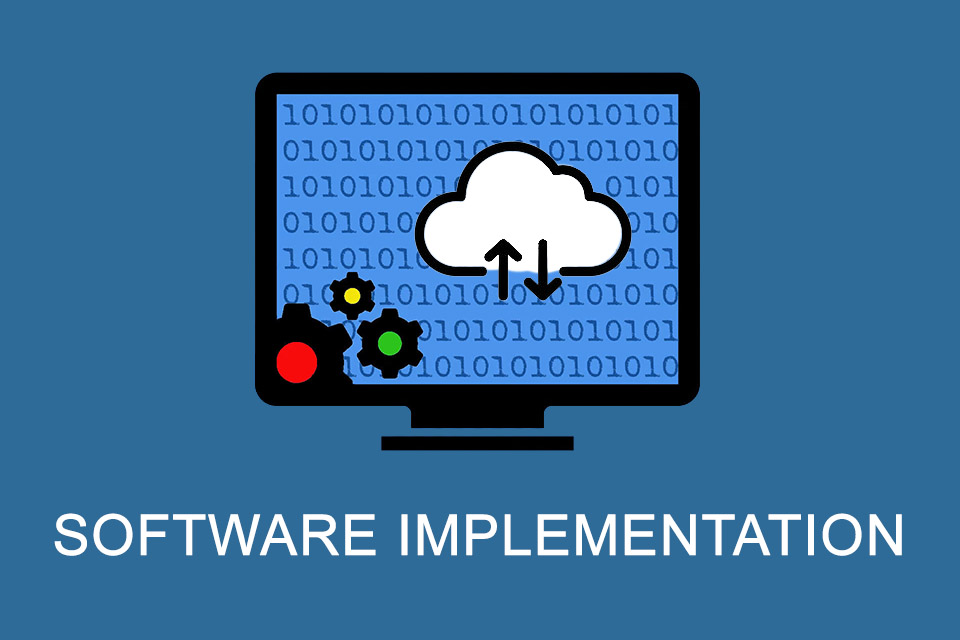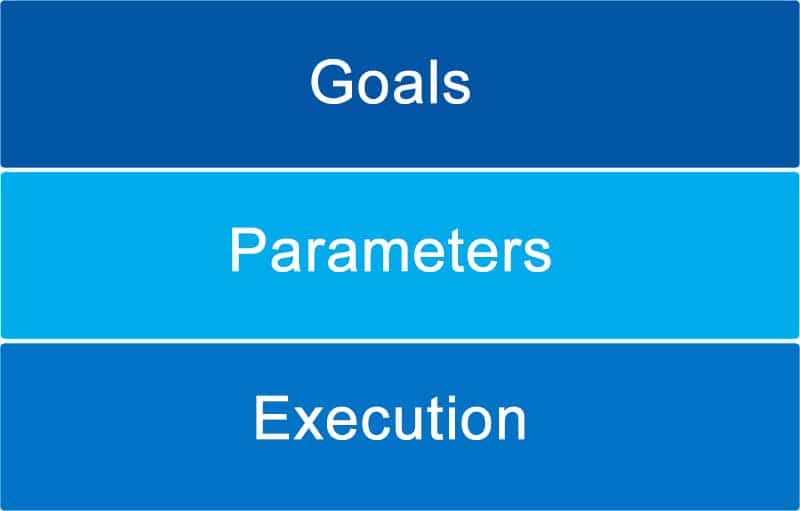How does an optimal Software Implementation work?
Smartpedia: Software implementation is the process of setting up software in an organization, including installation, configuration, commissioning, and support.
Software Implementation Definition
The term “software implementation” describes the process of the future usage of software in an organisation. It is often equated with more technical tasks such as software distribution, installation and configuration. Such an interpretation however neglects the users and leads easily to lacking software acceptance.
When defining the right procedure for implementing new software, the type and scope of the software naturally plays an important role: an app that is installed on a mobile phone with a click requires less effort than the launch of a new graphics program in the marketing department or a new ERP system that is to be rolled out at several locations.
Software implementation and costs
In the course of software procurement, companies face certain costs
- in the definition of requirement and criteria catalogs,
- in the pre-selection and selection of solutions,
- through possible adjustments,
- through the acquisition of licenses and subsequent maintenance and servicing.
This easily prompts organisations to consider implementing software as cost-effectively as possible. Or to put it positively: how can an optimal software implementation be achieved? Which strategies and steps are recommended?
Lack of software acceptance
Frequently, companies complain that software does not offer the desired benefits and is therefore not popular with users. Here, cause and effect are often confused. Software that has simply been installed but not explained and not adapted to the employees and their activities cannot be accepted. The reason for a lack of software acceptance is often a bad software implementation or a wrong make-or-buy decision.
Phases of software implementation
The implementation of software involves operating in phases and setting goals, integrating application groups, determining responsibilities and actively controlling execution.
The definition of goals
What is the concrete situation, what are your goals and how do you measure success? Before you start implementing software, you should analyse the initial situation. The following minimum questions must be answered:
- Which user groups are there and what has to be considered in each group?
- Which conflicts, worries and fears exist in the user groups, with individual users and between user groups?
- What are the goals of each user group and each user?
In addition to the discussion with the users, there are also questions about the area of application of the new software:
- Do processes have to be adapted to the software?
- Can the software be adapted to lived and established processes?
- Should new processes be implemented at the same time as the new software?
In addition to the processes and goals, it is also important to deal with the results:
- What is to be achieved concretely with the software implementation?
- What should be different, faster, better, safer after the launch?
- How do the users, the user groups and the entire organisation notice that something has changed positively?
Determination of the parameters
Software is often implemented in the course of a project. It is essential that you clarify the contact persons, the significance of the launch and thus the significance of the project:
- Who are the internal contact persons in the company and at suppliers?
- How does the communication with the contact persons take place?
- How committed is the management?
- What is the priority of the implementation compared to the current activities of the contact persons and the future users?
- How important is the project compared to other, parallel projects?
- Who is the responsible contact person in the company after the rollout and who is actively involved in the rollout?
The successful execution
Once you have defined the goals and parameters, you can now define a goal-oriented procedure. The focus is on the user, because only if he has a benefit from the new software, he will use the software permanently, and only then can a company benefit. The following aspects have to be considered during the procedure:
- Definition of the rough and detailed procedure including scheduling and monitoring of quality gates.
- Training needs analysis, development of training profiles, training coordination and, if necessary, awarding of certificates.
- Training of user groups, teams and key users with in-depth training and follow-up training opportunities.
- Pilot mode, Go Live Support and After Go Live Support, as well as ongoing project coaching.
- Institutionalised feedback for quality assurance and gaining new requirements, possibly open user discussions and exchange with management.
- Configuration and adaptation of the software based on user feedback.
The scope of a software implementation depends on the type of software to be implemented and the related objectives. The most important factor during the introduction is the user, because without his acceptance the implementation will not reach the set goals. This is the reason for the necessity of a planned, structured introductory procedure.
Download the Software Implementation Whitepaper for free now.
Everything important about Software Implementation at a glance.
- Which criteria speak in favour of purchase, which in favour of a new development?
- What is the ideal process for software selection?
- How does the software implementation succeed?
- How can software acceptance be increased?
Knowledge on 18 pages to take away.
Software implementation strategies
Basically, there are two strategies for software implementation:
- the implementation on a reference date with a big bang or
- in iterations.
Big Bang Strategy
In a Big Bang implementation, the new software is fully deployed at a clearly defined point in time – in larger organisations also across all locations and departments. This strategy is also known as “one-and-done-deal”. Ideally, commissioning should take place at non-critical times, on weekends, public holidays or during vacation periods. The goal of the Big Bang implementation is the complete availability of the software at the workstations and the employees’ devices at the defined time.
Advantages and disadvantages of the Big Bang strategy:
- Compared to iterative implementation, it is considered to be more cost-effective because the organisation only has to bear the maintenance and servicing costs of an application.
- The changeover for all users at the defined point in time ensures an immediate change in processes and procedures and consequently a faster return on investment.
- On the other hand, there are various risks, such as
+ the postponement of the release due to ongoing requirement changes,
+ lack of staff training,
+ lack of migration of data from existing systems, etc.These risks can lead to reduced productivity and a low level of user acceptance.
Strategy of iterative implementation
The iterative software implementation takes place in phases as a series of steps. It also implicitly supports parallelisation, i.e. the transitional, simultaneous use of existing and new software. With the iterative approach, components can be provided individually – e.g. at different locations or for different departments. This allows users to gain experience with parts of the new software at an early stage and at the same time reduces the risk of failure compared to the Big Bang approach.
Advantages and disadvantages of the iterative strategy:
- The step-by-step approach and early feedback from users allow adjustments to be made during the implementation phase.
- The organisation has more time to train its staff. And employees have more time to adapt to the new system.
- As the deployment takes place over a longer period of time, users have to use several systems at the same time. There is a threat of higher costs.
- The costs are relatively high, because the organisation has to provide resources for the maintenance of the existing and the new software as well as all temporary interfaces for linking the two solutions.
- If the solution is introduced over a longer period of time, there is a risk of external factors such as impending cost savings, a change of direction or restructuring measures. This can lead to a situation where the new software is never fully implemented and therefore offers little or no benefit.
It is not generally possible to determine which of the two strategies is better. Each company must find its own way and define a suitable procedure.
Tips and tricks for optimal software implementation
There are a number of tips and tricks that you should consider when launching software to minimise the risks of a bad software implementation:
- Ensure clear responsibilities and roles, get management support, and agree decision paths.
- Identify goals, calculate real costs and effort, and clarify the importance of software deployment.
- Plan your approach as precisely as possible and check the planning regularly.
- Do not overload the project participants with additional tasks.
- Expect resistance from users who will lose standing subjectively or objectively as a result of the new solution.
- Pay attention to the mood of the users and integrate it as often and sensibly as possible.
- Communicate openly and honestly with the users.
- Avoid personnel changes during the introductory phase.
- If possible, use experts and expert knowledge and do not let the software be introduced by an intern.
- Document and communicate decisions with appropriate reasons and test before you go live with the new software.
- Don’t save on training.
If you like the article or would like to discuss it, please feel free to share it in your network. And if you have any comments, please do not hesitate to send us a message.
Here you can find additional information from our t2informatik Blog:





